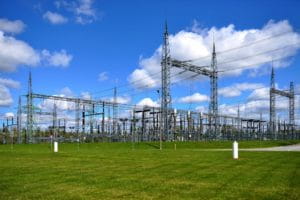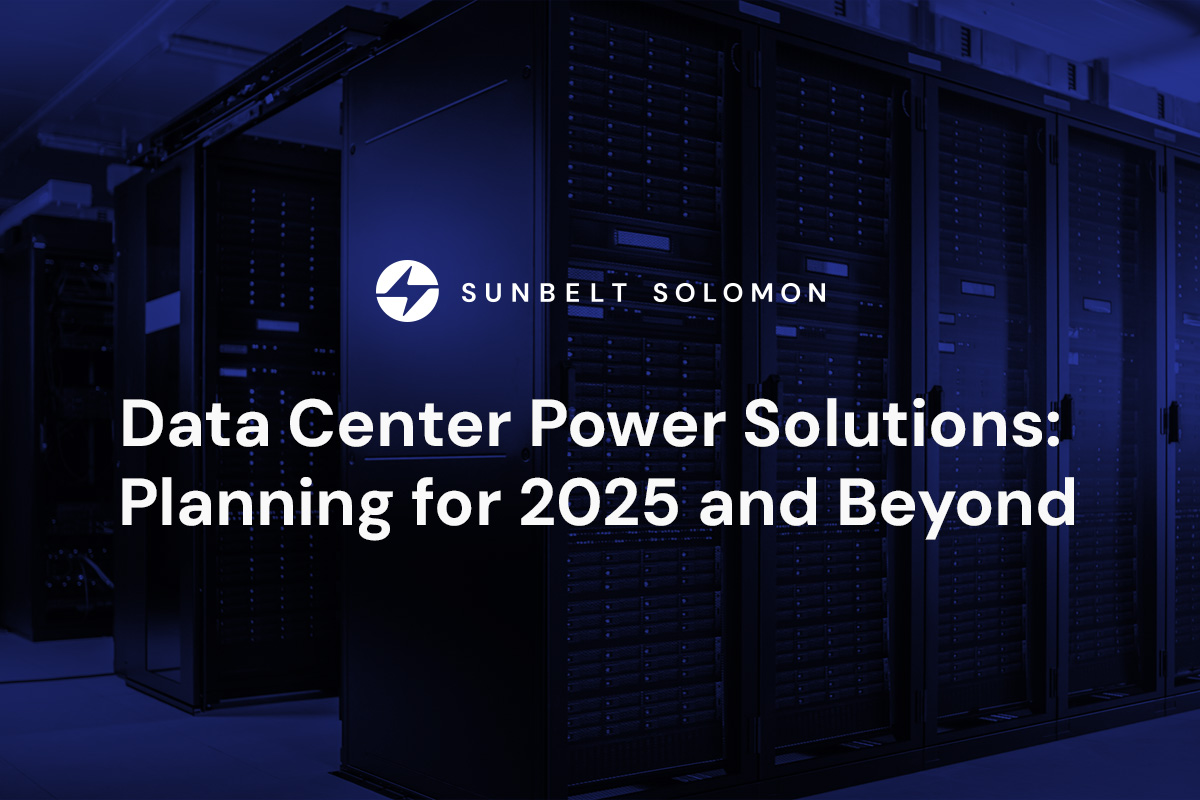
As commercial industries increasingly seek sustainable and resilient energy solutions, microgrids emerge as a leading option. These localized energy systems can operate independently or with the main grid. They enhance energy independence, reduce costs and promote sustainability.
In this guide, we’ll explore the fundamentals of microgrids, their benefits for commercial applications and practical steps for planning and implementation. We’re equipping you with essential knowledge to navigate the evolving landscape of energy management and innovation.
Understanding Microgrids
Microgrids are localized, self-sufficient energy systems capable of powering a discrete geographic area, from business centers to entire neighborhoods. These systems allow you to generate your own energy and use it when needed. They are made up of various interconnected loads and distributed energy resources (DERs), including wind turbines, solar arrays and natural gas or diesel generators. Microgrids use these components to produce power.
Microgrid systems can operate in conjunction with the main electrical grid, usually drawing power from the main grid or giving excess energy back to it. These systems can also operate in island mode, which means they function independently of the main grid and deliver power on their own.
Microgrids tend to operate autonomously when trouble occurs with the main grid. They disconnect themselves from the main grid and stop relying on its power to protect themselves. For instance, damaging winds or debris can take down the transmission lines and cause the main grid to fail. An area can be out of power as a result. That’s when the microgrid systems disconnect from the main grid and continue to generate power, keeping the lights on in your property despite the outage.
Key Components of Microgrid Systems
To better understand commercial microgrids, examining the primary components that make up these systems and how they contribute to their operation is crucial. Some of the key components of microgrid systems include:
- Energy generation sources: Microgrid systems need electricity generation sources to operate. These can include renewable sources like solar panels and wind turbines as well as conventional generators powered by diesel or natural gas.
- Energy storage systems: Organizations sometimes choose to supplement microgrids with batteries and other storage systems, such as electric vehicles and charging stations. The systems store excess energy that microgrids produce during low-demand periods and supply them during peak demand or when generation sources are offline.
- Distribution infrastructure: Distribution infrastructure is responsible for delivering electricity from the generation sources to loads, such as lines, switches and transformers.
- Control systems: Control systems are the brain of a microgrid. They use advanced software and hardware to monitor, control and manage the flow of electricity from various sources to meet demand. These systems ensure the microgrid operates efficiently and interacts correctly with the main power grid if connected. Control systems can autonomously switch between grid-connected and island mode during outages, optimizing the use of renewable sources.
What Is a Smart Microgrid?
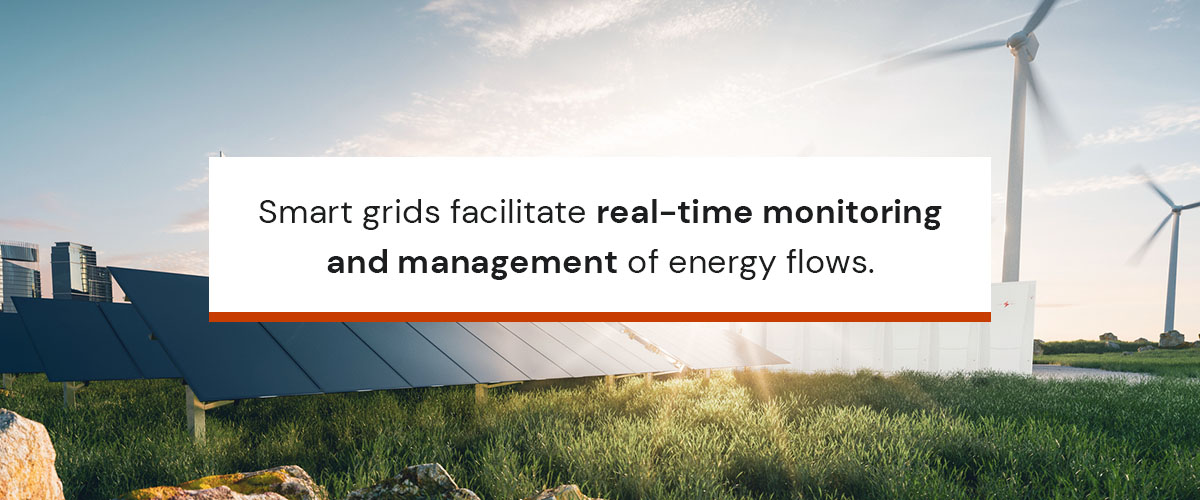
Microgrid systems have existed for decades and undergone various improvements since their introduction. Modern microgrids are smarter than ever. They are equipped with advanced sensors, communication technologies, automation and control systems. Smart grids facilitate real-time monitoring and management of energy flows.
They allow you to have more control over energy consumption and costs. As a result, your organization can increase efficiency and reduce its carbon footprint.
What Types of Commercial Settings Use Microgrids?
Microgrids for commercial applications are increasingly being recognized as viable solutions for organizations seeking to enhance energy reliability and sustainability. A wide range of organizations benefit from the microgrid systems, including:
- Data centers: Commercial microgrids ensure a continuous power supply to data centers, which is essential for maintaining operations and meeting demands. They also allow data centers to optimize energy consumption by using renewable sources, reducing operational costs and environmental impact.
- Manufacturing: In the manufacturing industry, microgrid systems provide reliable power that keeps production lines running and helps avoid costly downtime due to grid failures.
- Utility companies: Utility companies use microgrids to enhance grid resilience and reliability, allowing them to isolate and protect critical loads during widespread power outages. They leverage these systems to create a balance of electricity supply and demand.
- Airports: Airports use microgrids to manage the electric load more effectively or as backup power for maintaining critical operations and safety systems in the event of power outages. These systems also facilitate the integration of renewable energy sources as airports aim to reduce their carbon footprint.
- Retail: Commercial microgrids safeguard retail businesses from the direct loss associated with power outages. By providing a reliable power supply, microgrids can prevent equipment damage, loss of business and spoilage of perishable goods. They can protect both your revenue and inventory.
- Educational institutions: Educational institutions like universities and colleges employ microgrids to ensure a stable power supply for critical research. These systems also maintain campus operations during grid failures.
- Healthcare: Hospitals and healthcare centers rely on microgrids to keep lifesaving medical equipment on during power interruptions. Microgrids are crucial for preserving full operational capacity and ensuring uninterrupted patient care.
- Remote sites: Transmission and distribution infrastructure is usually limited or nonexistent in remote or isolated regions. Whether in a First Nations community in Canada or mining sites far away from populated areas, microgrids involving an array of generation sources and energy storage technologies are a fact of life.
Benefits of Microgrids for Commercial Applications
Microgrids can help address a range of issues associated with the main power supply, providing a reliable source of electricity when it’s needed the most. The following are key microgrid benefits.
Energy Independence
Microgrids allow organizations to generate and manage their own power sources, often from renewable solutions like solar panels or wind turbines. These systems reduce reliance on centralized power grids and external energy suppliers, enhancing energy independence. As a result, your organization can gain greater control over its energy consumption.
In times of high energy prices or supply disruptions, microgrid systems enable you to maintain operations without significant interruptions. Additionally, you can integrate energy storage systems, like batteries, to store excess power for later use.
Resilience
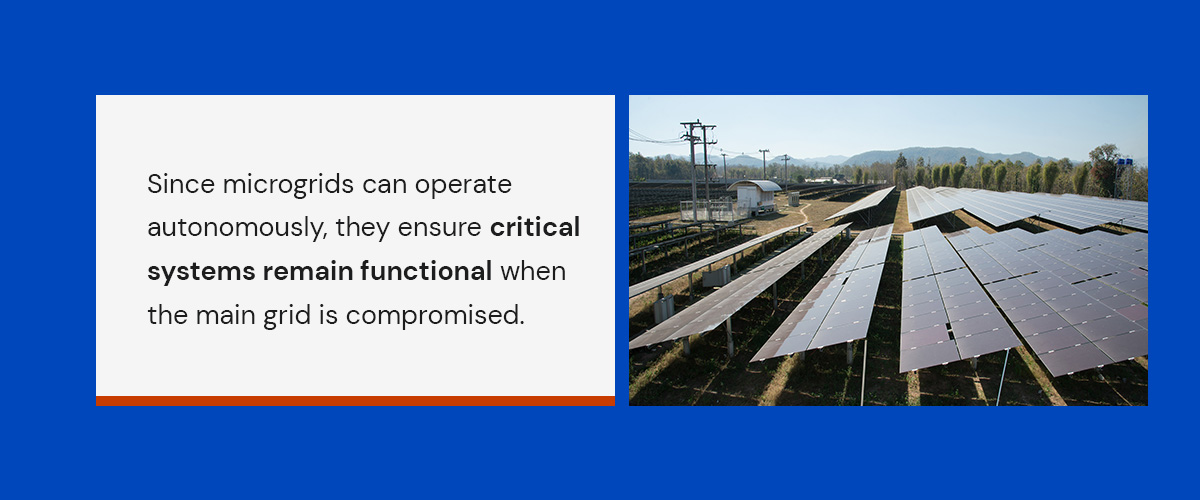
One of the most significant benefits of microgrid systems is that they enhance organizations’ energy resilience. They offer an alternative power source during grid failures or natural disasters. Since microgrids can operate autonomously, they ensure critical systems remain functional when the main grid is compromised. This capacity is crucial for organizations that rely on continuous operations, such as hospitals, data centers and manufacturing facilities.
Microgrid systems can quickly adapt to changing conditions, minimizing downtime and financial losses. These power resilience solutions seamlessly transition between grid-connected and island modes, further strengthening the overall reliability of the energy supply.
Sustainability
Microgrids promote sustainability in commercial settings by facilitating the integration of renewable energy sources, including wind and solar. This shift reduces greenhouse gas emissions and reliance on fossil fuels, which aligns with global efforts to combat climate change. Commercial microgrids enable organizations to decrease their carbon footprint and contribute to greater sustainability efforts.
Adopting sustainable practices can enhance your organization’s reputation and attract environmentally conscious consumers or investors.
Cost Savings
Implementing microgrids in commercial settings can lead to significant economic advantages. With the capability to generate their own energy, organizations can reduce electricity costs and protect themselves against fluctuating energy prices. Commercial microgrids also enhance energy reliability, which reduces the risk of costly outages.
The cost of building and implementing microgrids can be significant. However, the initial investment in these systems can be offset by long-term savings.
Microgrid Planning and Implementation for Commercial Use
Planning a microgrid for commercial applications involves extensive considerations and steps to ensure optimal results. Here is a step-by-step guide to microgrid planning and implementation.
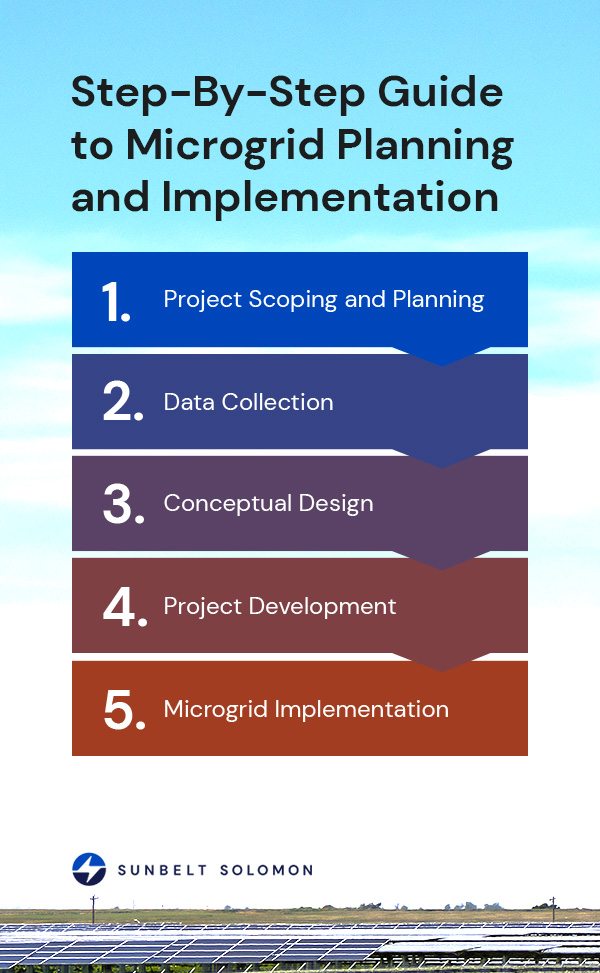
1. Project Scoping and Planning
The first step in microgrid planning is project scoping and planning. This phase establishes the microgrid project by identifying its purpose, high-level goals and potential risks.
Project scoping and planning involves developing a project team with representatives from various disciplines, such as energy management, public works and technical experts. The team will gather and review relevant background information to prioritize risk mitigation strategies and ensure the microgrid aligns with broader energy resilience efforts.
During this stage, your team will also conduct multiple consultations with as many stakeholders as possible to discuss the project’s goals, requirements and potential risks. This groundwork helps ensure that the microgrid design will meet the project’s specific needs and reduce complexities later.
2. Data Collection
Data collection involves gathering comprehensive information about existing site conditions, energy consumption patterns and relevant infrastructure. At this stage, your project team should gather the following data to inform the design process:
- Electrical drawings and maps
- Existing generation evaluation
- Future generation options
- Utility control system
- Energy costs
This step is critical for understanding the operational context and constraints of the microgrid. It enables your team to identify critical loads and potential energy sources.
The data they collect supports technical assessments and also aids in stakeholder consultations by providing a factual basis for discussions on project feasibility and design options. Thorough data collection sets the stage for informed decision-making in the following design phases.
3. Conceptual Design
In the conceptual design phase, your project team will first identify the microgrid’s boundaries and establish electrical isolation points for critical loads. This step also involves evaluating various design options, including generation sources and control systems, to meet the identified energy needs.
The team assesses techno-economic factors such as capital costs, operational savings and potential revenue streams. They work with stakeholders to refine design choices, ensuring that the selected configuration aligns with project goals. The conceptual design process is methodical and requires continuous adjustments based on emerging insights and stakeholder input. The result is a robust microgrid design.
4. Project Development
The project development phase in microgrid planning involves refining the conceptual design and selecting the preferred implementation method. This phase requires your team to carefully consider acquisition strategies, including whether to pursue design-bid-build or design-build contracts. Microgrids are complex systems that may not suit traditional contracting approaches.
Engaging with stakeholders and preparing a request for proposals (RFPs) to select qualified contractors is crucial at this stage. Having experienced teams and flexible contracting processes tailored to unique requirements is important as it helps support successful project execution and funding alignment.
5. Microgrid Implementation
The implementation phase encompasses the microgrid’s construction, commissioning and testing. This step requires careful management to ensure that all components are built to specifications and function as intended.
The project team will oversee construction activities and coordinate with contractors and stakeholders to maintain timelines and budgets. Once construction is complete, they will conduct rigorous testing to validate system performance under various operational scenarios. Implementation also includes training the staff who will operate and maintain the microgrid.
Successful implementation leads to the operational launch of the microgrid, enhancing energy resilience and reliability.
How to Manage Microgrid Systems
Organizations can manage microgrids through various Energy Management Systems (EMS) that optimize the operation of DERs, ensuring reliability and efficiency.
Consider conducting regular assessments and predictive analytics to help forecast energy demand and supply fluctuations. This approach allows your organization to adjust operations accordingly.
Additionally, you may want to implement demand response strategies, incentivizing reduced energy consumption during peak periods. Overall, effective management of microgrid systems can help your organization lower energy costs, increase reliability and achieve environmental goals.
Challenges of Commercial Microgrids
While microgrids offer a range of benefits, implementation also comes with its fair share of potential burdens.
Here are the main challenges to consider when implementing microgrids for commercial systems:
- Cost: Commercial microgrids require a substantial investment. The upfront cost of designing and installing can be high, making it difficult for organizations with limited resources to take advantage of these systems.
- Technical issues: Designing, operating and managing microgrids involves various technical complexities. From forming an expert team for the planning stage to using EMS for effective management, microgrid projects require numerous considerations to ensure success.
- Regulatory challenges: Overcoming regulatory hurdles is another issue organizations face when implementing and operating microgrids. Regulatory frameworks can impose legal restrictions that can make deploying these systems challenging.
The Future of Commercial Microgrids
The future of commercial microgrids looks promising, driven by the increasing demand for energy resilience, sustainability and cost savings. As commercial organizations seek to mitigate energy costs and reduce carbon footprints, microgrids will stand out as a solution that integrates renewable sources to enhance energy independence.
Advances in energy storage technologies and smart grid solutions also showcase a move toward better efficient energy management and reliability. Overall, microgrids will be crucial in creating efficient and resilient energy systems worldwide.

Connect With Sunbelt Solomon to Learn More
Transform your organization’s operations with sustainable power resilience solutions. At Sunbelt Solomon, we’re here to help you achieve your goals. We provide reliable transformers and turnkey power solutions to support your industry’s demands.
Contact us to learn more about solutions and how we can help enhance your energy system.


